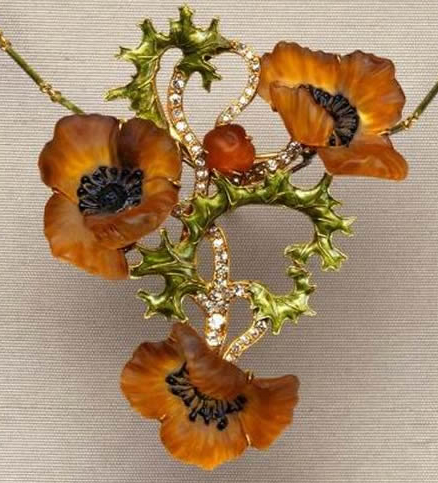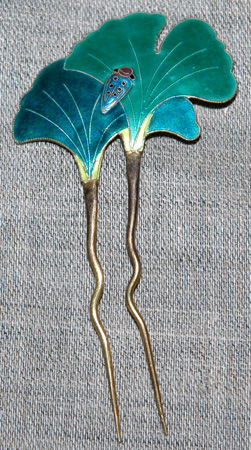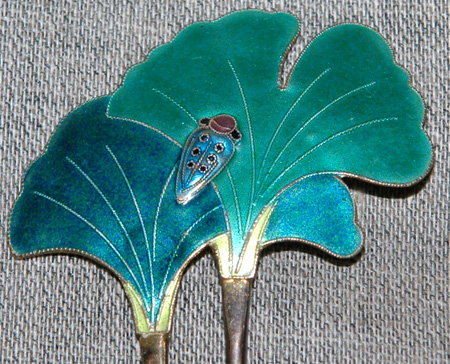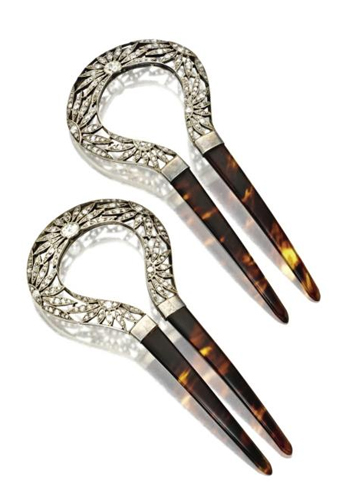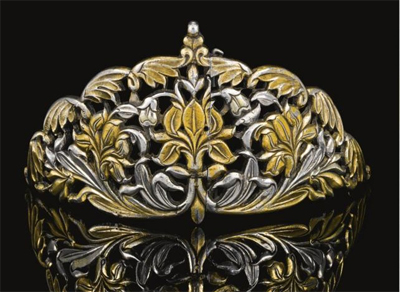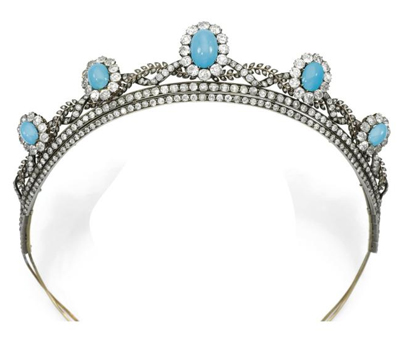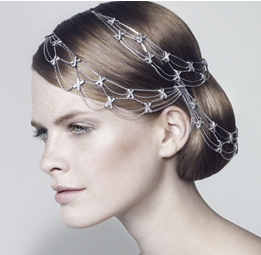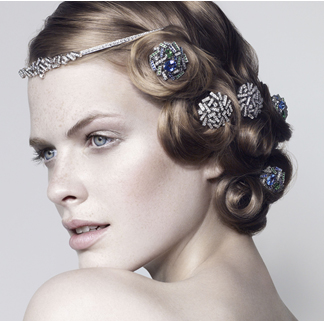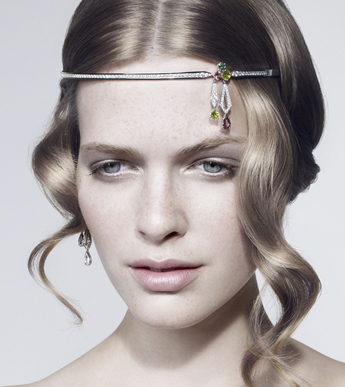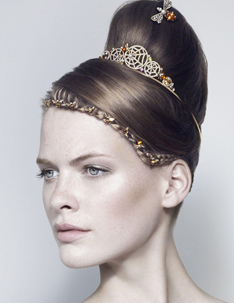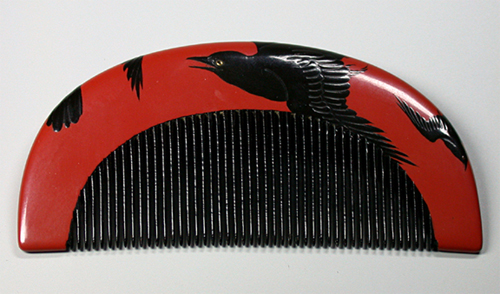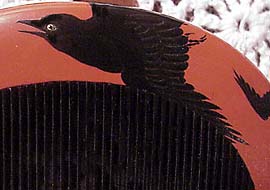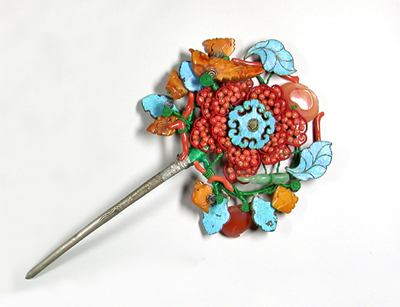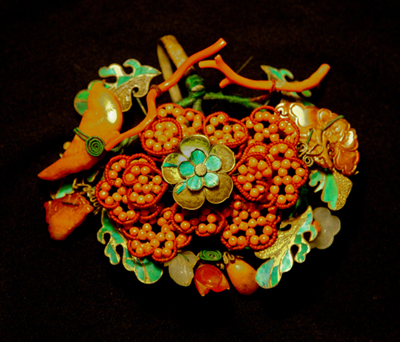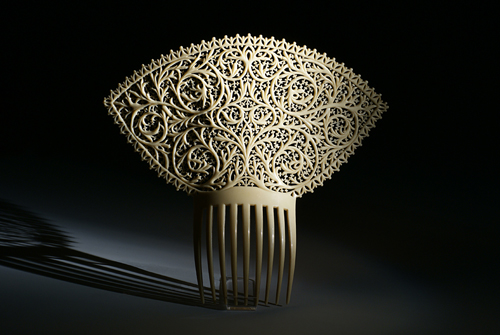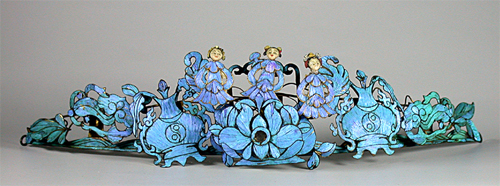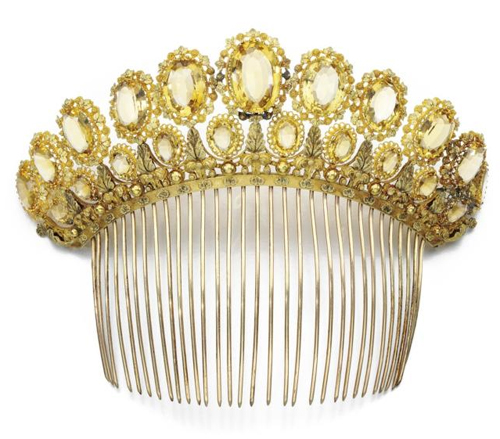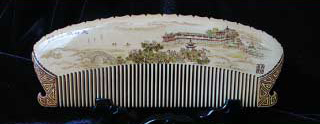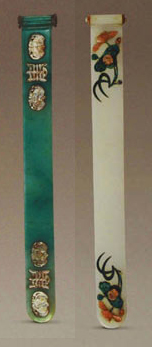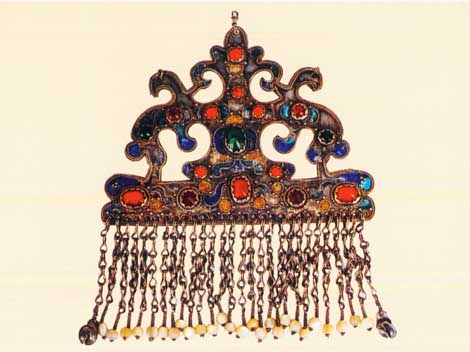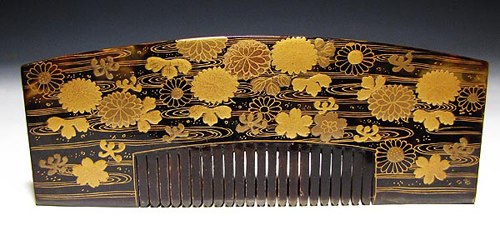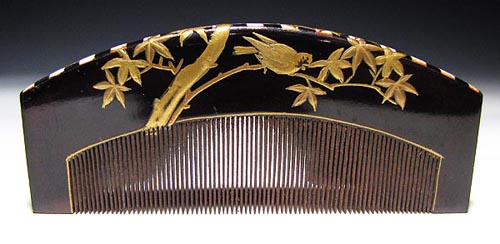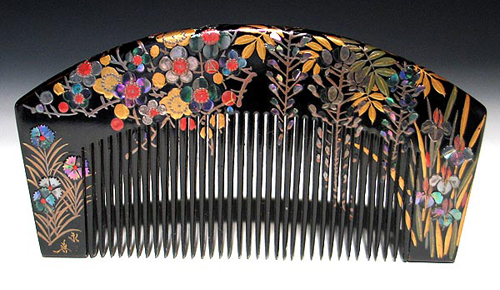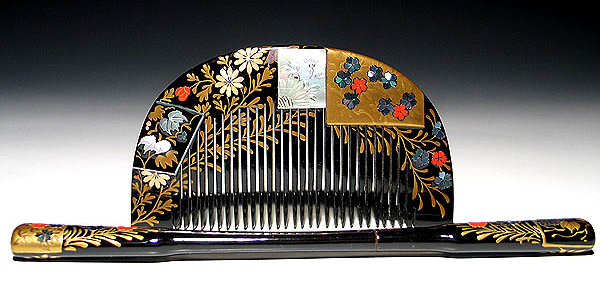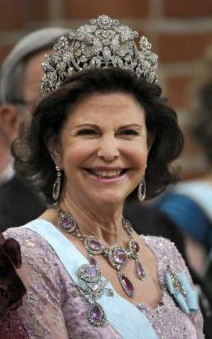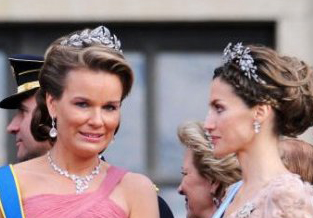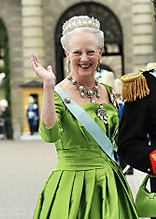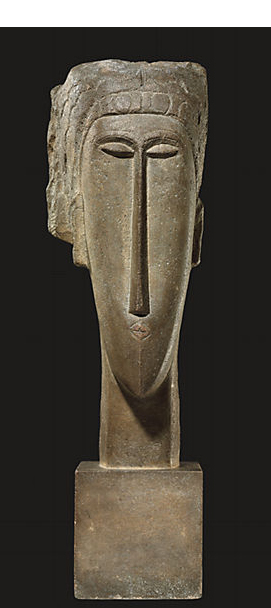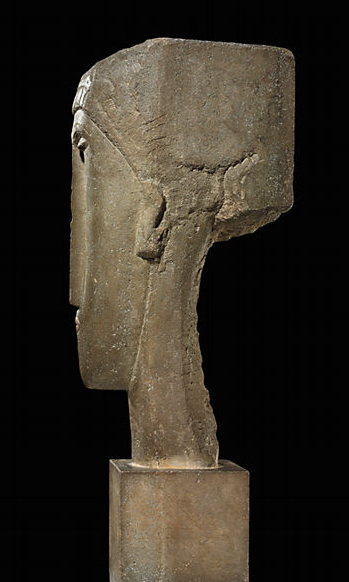My first piece today is actually a British arts and crafts piece by Arthur and Georgie Gaskin, c. 1910. The raised silver-foliage design is bookmarked by pearls. Provenance: Arthur & Georgie Gaskin, City Museum & Art Gallery, Birmingham, 1982, page 87.
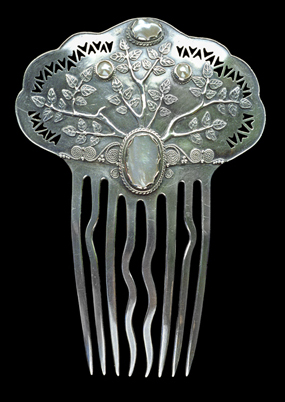
This is a spectacular art nouveau diadem of a Byzantine princess. It is French; made of gold, opal, and diamonds; c.1900. Unmarked, it is attributed to Fouquet or Vever.
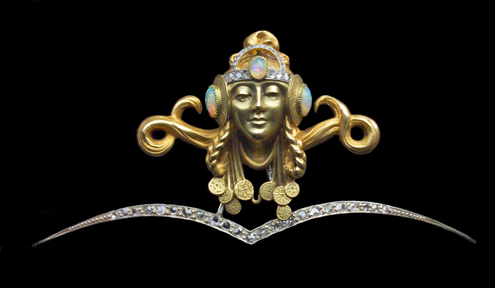
This is an original Lalique drawing of a comb with two Japanese rhinoceros beetles fighting each other (Thank you to member ch for making this correction). The comb was probably to be made out of horn. Maybe the fighting rhinoceros beetles and their feet, performing the engineering function of holding the chains, would be silver, and the jewels in the dangles would be pearls. What a knockout.
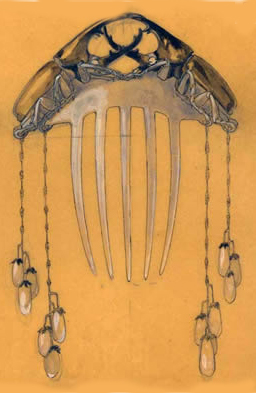
My last piece for this morning is a Lalique pendant, whose centerpiece can easily be taken off and worn in the hair. This piece is so gorgeous, it takes my breath away. The ornament depicts poppies made of glass, enamel, and gold.
